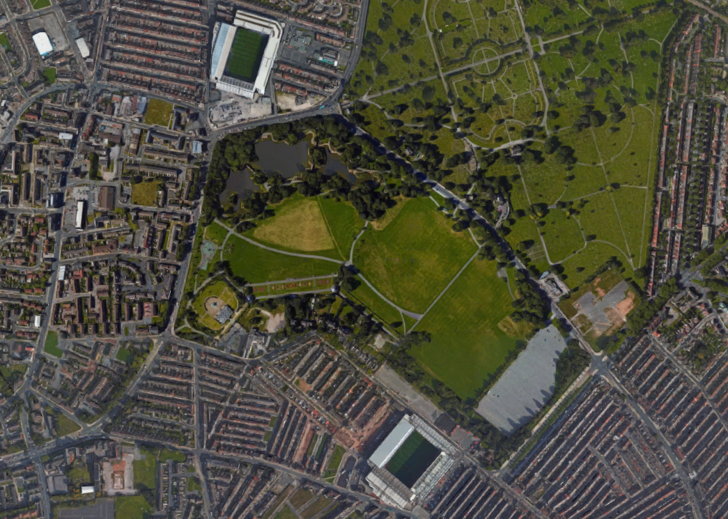
No footballing rivalry is more intense than the one that exists between clubs that play in the same city. There’s an entire article about cities with more than one football club within its boundaries elsewhere on the site, as well as breakdowns of the specific cities. That means that you can read about the fourteen or so clubs in London in more detail, or the fact that two of the most bitter rivals in Milan share the same stadium. Here, though, we’ll be telling you all about the Merseyside Derby and the two teams that compete in it, year-in, year-out.
Any discussion of Liverpool and Everton would be remiss if it didn’t include a mention of Tranmere Rovers, of course. Yet they are not a true rival of either club, not least because of their comparative lack of success. More importantly as far as this article is concerned is the fact that Tranmere are actually based on the Wirral peninsula, with Prenton Park located around seven miles from Stanley Park. Stanley Park, as you’re about to find out, is the piece of land that is all that separates Anfield from Goodison Park.
{module Maps – Cities – Liverpool}
Football Stadiums in Liverpool
| Stadium | Capacity | Team | League |
|---|---|---|---|
| Anfield | 53,394 | Liverpool FC | Premier League |
| Goodison Park | 39,414 | Everton FC | Premier League |
Liverpool – Anfield (2.26 Miles to The Liver Building)
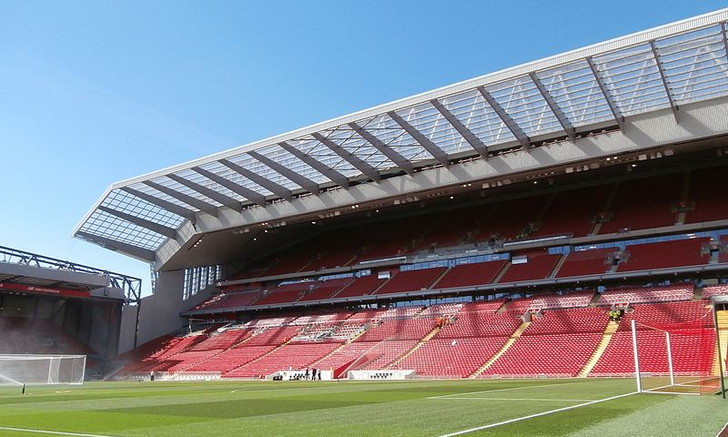
Perhaps one of the biggest reasons for Everton’s dislike of Liverpool is the fact that the latter club only exists because of the former. Everton Football Club was formed in 1878 and they started playing games at the ground that would become Anfield four years later. They left the location in 1892 after a dispute regarding the price of the rent after the ground had been purchased by a man named John Houlding. When Everton decided to leave, Houlding attempted to take over the club but failed, instead deciding to start a completely new club that would play at Anfield. That was the moment that Liverpool Football Club – and one of the most famous rivalries in world football – was born.
What made the rivalry between the two sides even more fierce was the fact that Everton chose to build their new stadium less than a mile away, on the other side of a public access area known as Stanley Park. Far from being intimidated by the proximity of the neighbours, Liverpool took it as something of a challenge. They won their first top-flight title in 1901, having won the Lancashire League in the year the club was formed and the Second Division in 1894 and 1896. They went on to win eighteen First Division titles between 1901 and 1990, which was a record in England for a long period of time. In fact, it remained a record until Manchester United equalled it in 2009 and overtook it in 2011.
For many Liverpool supporters, the rivalry with Manchester United is just as fierce as that which exists with Everton. The Reds and the Red Devils have long battled it out to be the most successful football club in England. United have won the most top-flight titles, Liverpool the most League Cups. United have won more FA Cups than Liverpool, but the Merseysiders have won more European trophies. When Liverpool won the European Cup for the fifth time in 2005 they solidified their position as the most successful British club on the European stage, getting to keep the trophy for themselves.
Yet there can be no denying that for people who live in Liverpool itself it is the games against Everton that mean the most. Matches between the two teams were known for a long time as the ‘Friendly Derby’, with support for the two clubs often split between families. When the two clubs went up against each other in the League Cup final of 1984, the entire ground reverberated with chants of “Merseyside, Merseyside, Merseyside”. That was, in many ways, a chant aimed at the resurgent city of Manchester as much as it was about celebrating the area the two sides came from. For Liverpool, Anfield became a fortress once their city rivals left the stadium and it has now been developed to welcome more than 54,000 people through its doors on a match day. For Everton, they had a ground of their own they could be proud of…
Everton – Goodison Park (2.57 Miles to The Liver Building)
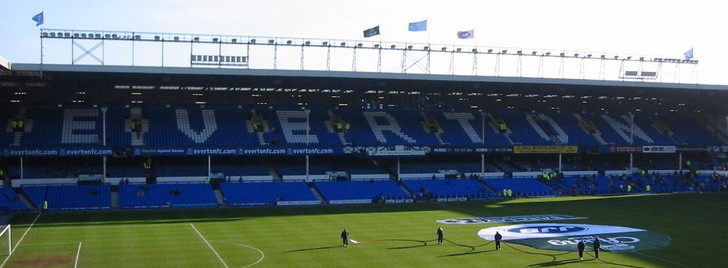
Evertonians will tell you that they aren’t bothered about ‘the Redsh*te”. In fact, they’ll tell you so vociferously and so often that you’d be forgiven for thinking of Shakespeare’s line that the ‘lady doth protest too much’. The folly of Everton supporters’s argument, of course, is that you’re supposed to dislike your city rivals. Their success should drive you on to be better at every opportunity, making you want to outdo them and overtake them in terms of success. To pretend that they don’t care about Liverpool’s achievements is just a nonsense, for they should absolutely despise them. That, more than anything else, is the sign of a true rivalry and it surely as pure in a city with two massive football clubs as anywhere else.
For a time Everton did rival Liverpool, too. The Blues won the First Division title in 1963 and Liverpool won it the following year. In the 1980s the two sides battled it out for supremacy in the English top-flight, with the Red half of Merseyside lifting the trophy in 1980, 1982, 1983, 1984, 1986, 1988 and 1990, punctuated by Everton wins in 1985 and 1987. Between them they won it every single year between 1979 and 1990, with the only exceptions being 1981 and 1989. Everton have won five FA Cups at the time of writing, giving them a haul of fourteen major trophies. Sadly for the Blues their last trophy win came in 1995 when they beat Manchester United in the FA Cup final.
Their relative lack of success when compared to their neighbours isn’t confined to trophies, either. They didn’t win a Merseyside Derby at Anfield between 1999 and 2017. It’s never been any consolation to Evertonians, but they have enjoyed numerous successes outside of the Merseyside arena. At the time of writing they have played more top-flight games of football than any other English side, having competed in England’s top division for a record 114 seasons. Goodison Park, Everton’s home stadium, is one of the oldest purpose-built football stadiums anywhere in the world, with most other grounds built at around the same time originally intended for use with other sports.
Heysel Stadium Disaster

There are any number of reasons why a strong rivalry exists between Everton and Liverpool, but Blues would undoubtedly point you towards the Heysel Stadium disaster in 1985. Liverpool were playing Juventus in the dilapidated stadium of Heysel in Brussels when trouble flared at one end of the ground. Supporters rushed at the Juventus fans and part of a wall collapsed, killing 39 people. It was a dark day in the history of England’s then most successful club, with a decision made by UEFA to ban all English clubs from European competitions for five years.
This ban was devastating for Everton, who had won the First Division title in 1985 and were thoroughly expecting to mount a challenge on the European Cup the following year. Though the resentment was there back in the 1980s, the belief that the Blues would ‘definitely’ have won the cup has grown since then, to the the extent that many Evertonians hold Liverpool responsible for the fact that they have never achieved European glory. How true or otherwise this is is actually besides the point, as it has fostered an anger and hostility between the two sides that means Evertonians go so far as to wear blue Father Christmas outfits, rather than have to put on the colour red.
Hillsborough Stadium Disaster
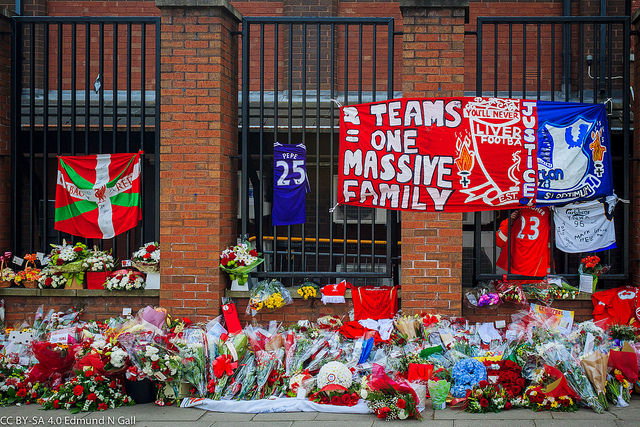
In amongst all of the talk of rivalry, bitterness and dislike between the two clubs, it’s important to mention the Hillsborough disaster. We’ve written about the disaster elsewhere on the site, so we’re not going to go into too much detail here. Yet there can be no denying that the city of Liverpool united in the wake of the disaster in which 96 innocent men, women and children lost their lives.
Both Reds and Blues came together in their grief and Everton Football Club has continued to offer any help and support that it can to Liverpool since that fateful day in 1989. Some things are far more important than football.
The Liver Birds
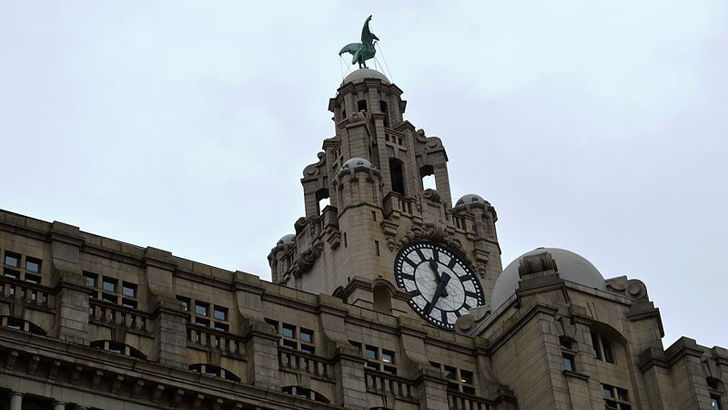
Standing on the bank of the River Mersey is the Royal Liver Building. Built between 1908 and 1911, this Grade I listed building makes up one of the ‘Three Graces’ that are part of a UNESCO World Heritage site. It was built for the Royal Liver Company, which gives the building its name, and perched on top of it are two Liver birds. Held down by wires, a local legend says that if the Liver birds were ever to fly away then the city of Liverpool would crumble to the ground. We mention all of this because a Liver bird sits proudly on the front of the Liverpool kit and has done ever since the club was formed in 1892.
Why are we talking about buildings, legends and mythical birds? Because Everton’s kit does not feature a Liver bird and some supporters aren’t all that pleased about that. The Liver bird is a symbol for ‘the whole of the city of Liverpool’ and not just one organisation; so said Liverpool City Council when the club attempted to trademark the birds back in 2008. Their attempt failed, though they succeeded two years later after coming to an agreement with the council. That was challenged in 2017, however, when the man who had bought Everton, Farhad Moshiri, bought the Liver Building and decided he wasn’t happy with his club’s rivals having something of a monopoly on an important symbol.
There is virtually no extent to which that doesn’t seem like a petty, insignificant squabble between two organisations that should probably know better. Yet it is somewhat symbolic of the rivalry between Liverpool and Everton. Both clubs have won plenty of trophies over the years, with both sets of fans able to celebrate huge days out at Wembley during their illustrious histories.
